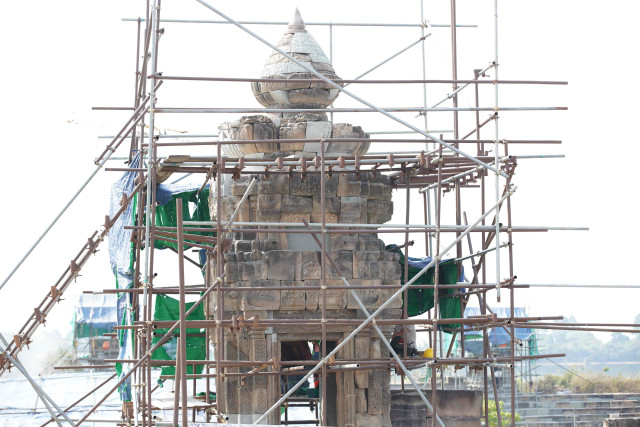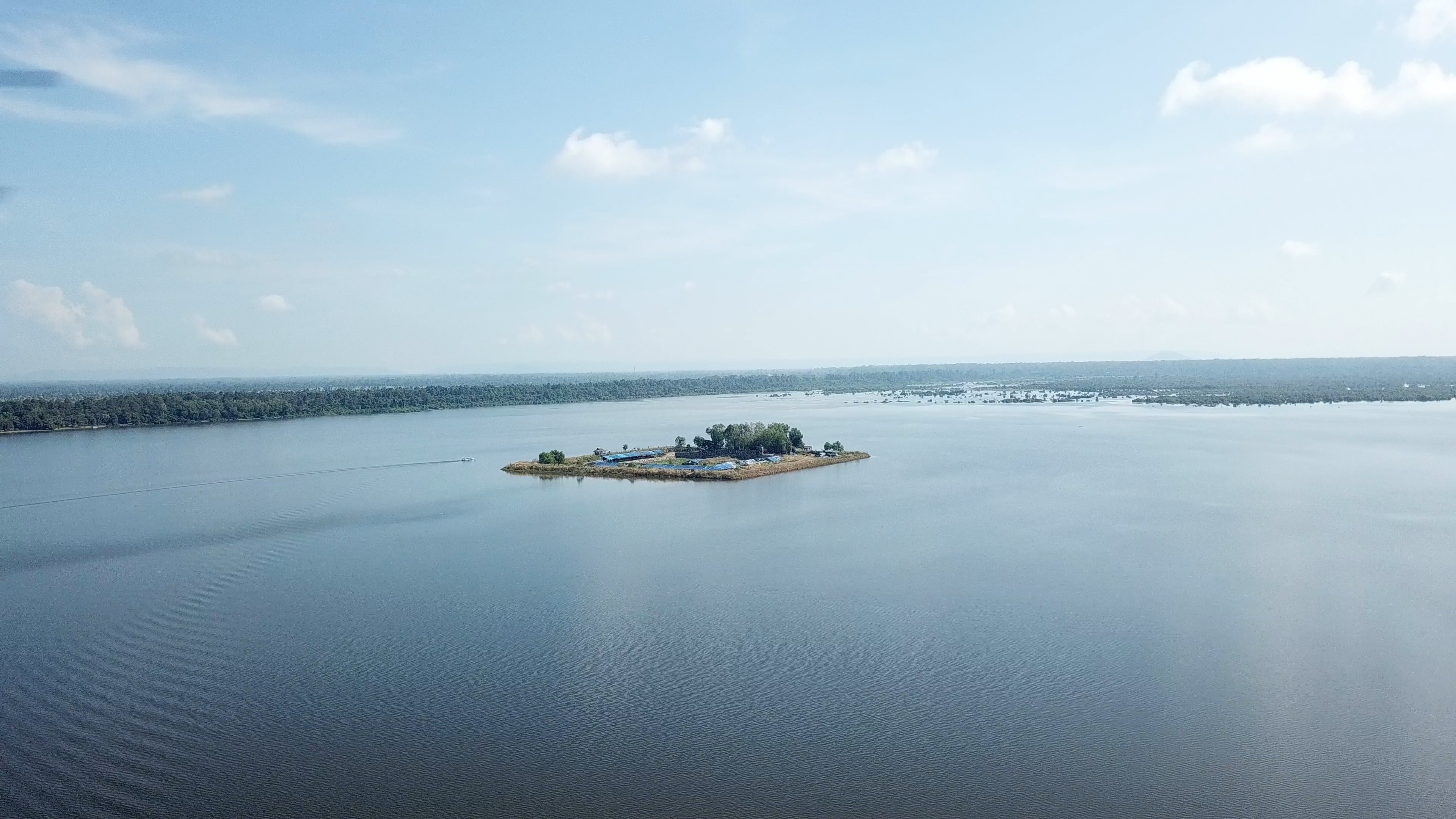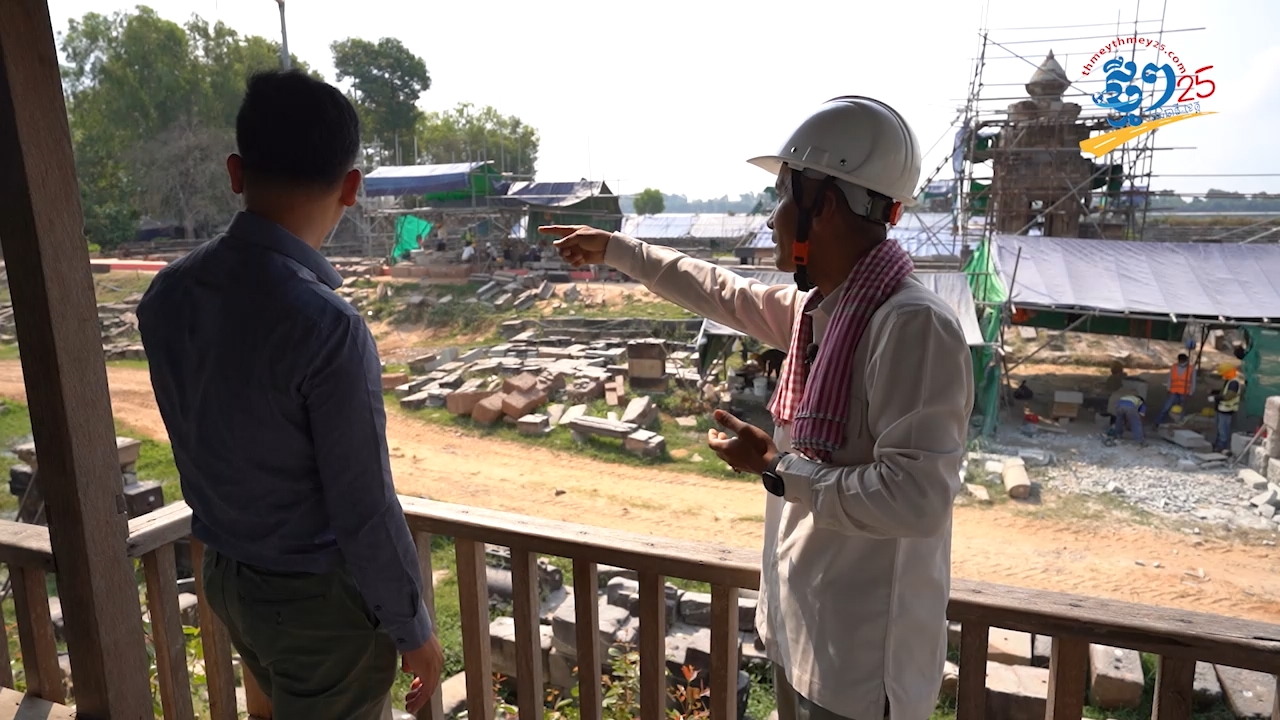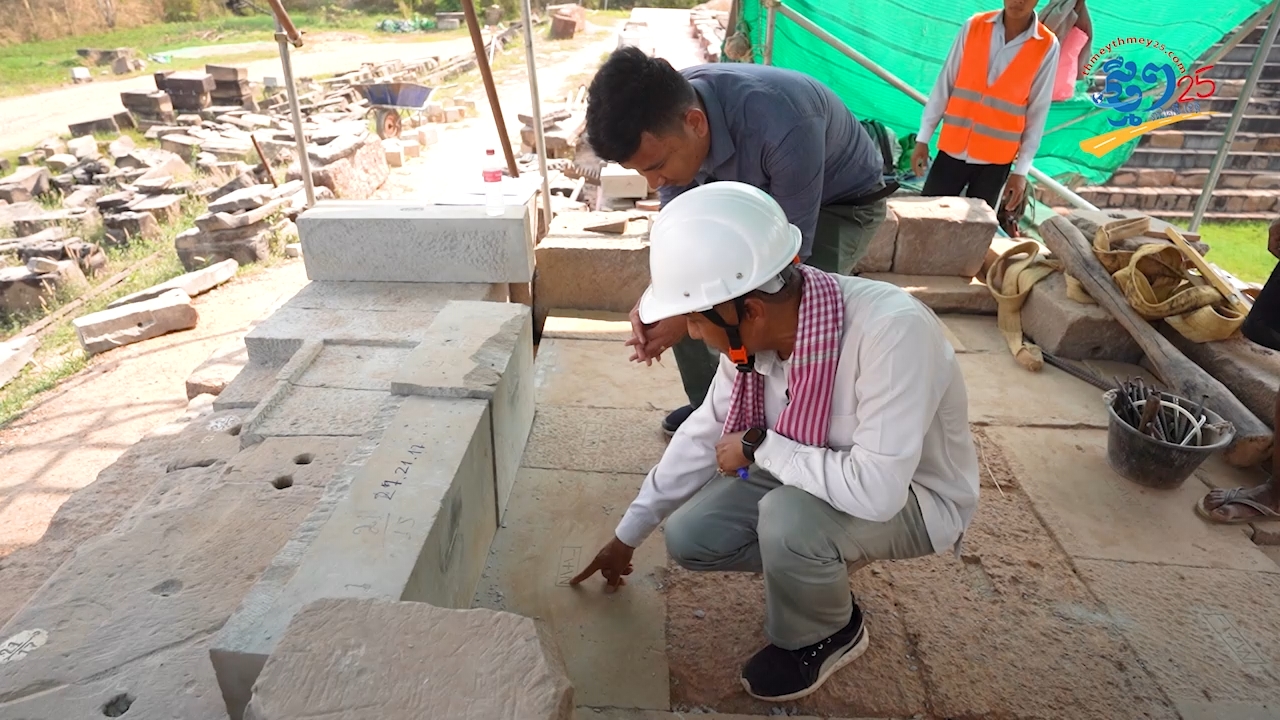Restoration Is Nearing Completion at the West Mebon Temple, so often Flooded

- By Sem Vanna
- July 22, 2023 4:00 PM
SIEM REAP — At times underwater due to monsoon rains, the West Mebon will have gone through multiple restoration efforts since the first French archeologists arrived at Angkor in the early 1900s during the French Protectorate, and attempted to keep the 1000-year-old temple on dry land.
Measuring 100 metres on each side, which makes it a giant square, the West Mebon temple sits on an island in the West Baray water reservoir, which is about eight kilometres long and two kilometres wide and is thought to have played an important role in the irrigation system of the past.
Studies have shown that there were 12 towers at the temple. In the early 19th century, the archeologists of the École française d'Extrême-Orient (EFEO), or French School of Asian Studies, went about restoring one of the towers.

In 2012, a restoration project was launched through cooperation between the EFEO and the APSARA National Authority—the Cambodian organization managing the Angkor Archeological Park. Delayed at some point due to financial considerations, the project has since resumed with only 20 percent of the restoration work remaining to be completed.
Working on a sinking structure that has literally been filled with water and mud for centuries has presented experts with a tremendous challenge, let alone having to find the stones that fell off the structure over the centuries and may have been scattered by the flow of water. All this requiring expertise, patience, determination and resources to complete the project.

“Archaeologists have to find the original plan of the temple: The principle of restoration is to retain the original plan,” said Cheam Bros, an engineer overseeing the restoration site.
Stones that cannot be found can only be replaced with new ones if the area where they have to be is essential to the structure. Every new block of stone is meticulously recorded and the data sent to be kept on record at museums, such data being crucial for future restoration projects of the temple.

According to archeologists, the West Mebon restoration site is one of the most complicated temples to work on in Angkor Park since it sits in what is in fact a big lake that can overflow during the rainy season. As Bros explained, “a dam has to be built and maintained on a regular basis so that the water can be pumped out.”
Once the restoration has been completed, tourists will be able visit the temple year-round, reaching it by boat.
Unlike the West Mebon, the East Mebon is today a dried-out reservoir with the East Mebon temple in the middle.
Written in Khmer for ThmeyThmey News, this article was translated by Ky Chamna for Cambodianess News.















